World
Africa Transcending into BRICS+ Orbit
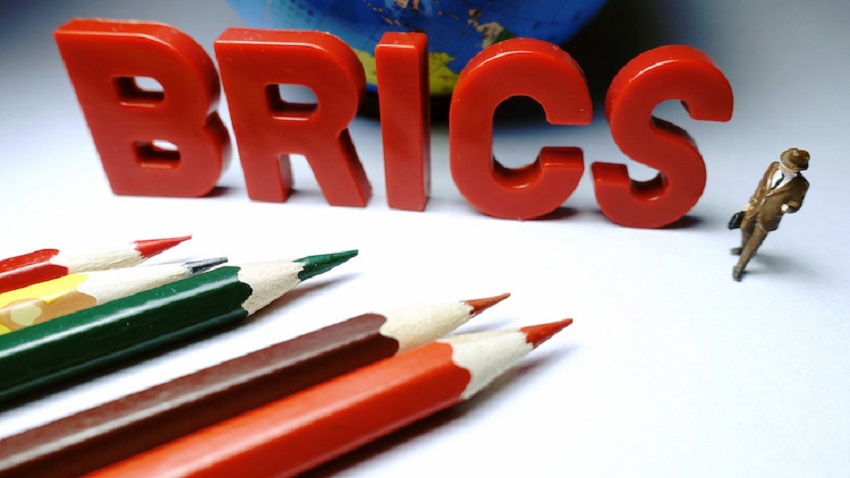
By Professor Maurice Okoli and Professor Chinedu Ochinanwata
After the historic 16th BRICS summit held in October 2024, three African States Algeria, Nigeria and Uganda, among others in Europe (Belarus and Turkey), Asia and Latin America, recognizably became BRICS+ partner states. In total, 13 countries received BRICS partner status, according to declaration reports by the Russian Ministry of Foreign Affairs. This category of ‘partner states’ was primarily designated as part of the distinctive-focused leeway towards acquiring full membership status in the determined future.
The legitimate implications for being in this category are quite notable and provide colourful heterogeneity to the BRICS+ association. It also encompasses a growing influence, the bubbling upliftment of these countries on another level of the global stage. Of course, these cannot be underestimated in discussing BRICS+, especially in the era of shifting economic architecture and geopolitical situations.
Together, the BRICS members encompass nearly a third of the world’s land surface and almost half of the world’s population. BRICS is an informal association of emerging economies, comprising Brazil, Russia, India, China, and South Africa, with the latest additions Ethiopia, Egypt, Iran, Saudi Arabia and the United Arab Emirates. Argentina declined to join at the last moment.
Despite various criticisms raised against a number of countries that ascended into the category of ‘partner states’ for BRICS+, each has its strategic dimension. In assessing particularly African countries – Algeria (North Africa), Nigeria (West Africa) and Uganda (East Africa) – BRICS+ now, has, in the first place, a wider geographical representation across Africa. It is important to reiterate here that Ethiopia, Egypt and South Africa are full-fledged BRICS members.
Ethiopia, by all standards, is a reputable country in East Africa. The continental organisation African Union (AU) is headquartered in its capital, Addis Ababa. Egypt, considered to be a regional power, also plays invaluable roles within the Arab world, specifically in North Africa and in the Middle East region. Without much doubt, the new ‘partner states’ – Algeria, Nigeria and Uganda have indicated their collective commitment to the multifaceted ideals in the declaration adopted in Kazan, Tatarstan Republic.
BRICS’ numerical expansion and quality transformation in January 2024, and the creation of ‘partner states’ in October 2024, both under Russia’s BRICS+ chairmanship have undoubtedly opened doors to new partnership opportunities for Africa.
The strongest question centred on how BRICS’ African partnering states, Algeria, Nigeria and Uganda can strategically position themselves to benefit from the evolving dynamics within BRICS+ while, in this new geopolitical reality, simultaneously navigating for competing geopolitical interests in Africa. There are emerging challenges, but BRICS’s influence is growing and provides an impetus for strengthening relations and working systematically for economic growth, especially in the processes of reshaping economic architecture in this fast-rising multipolar world.
Nigeria and Uganda, as potential partners in the BRICS, could engage in several collaborative initiatives to enhance their economic political and social developments, including trade and investment.
For instance, Nigeria, with its natural resources and increasingly large market, and Uganda, with its agricultural potential, can collaborate to boost intra-BRICS trade and that of intra-Africa trade. In addition to this, exploring investment opportunities in sectors such as manufacturing, production innovation and technology has a clean basis to add value to the raw materials and transform them into exportable products.
Closing related to the above, are pertinent questions of ensuring energy security and infrastructure (transport logistics). Nearly all African countries are griffing for support in technology transfer, and fintech – these largely depend on sustainable energy supply. Consequently, joint initiatives could harness the capabilities of BRICS members, particularly China, India and Russia in these sectors.
By leveraging their respective strengths and, with a focused approach, Nigeria and Uganda could address these shortfalls and deficits, and further down extend assistance across West Africa, and in East Africa. One key advantage is that Uganda has Ethiopia and Egypt as BRICS members, a ready-made basis for BRICS collaboration despite the differences and persistent conflicts in the region. The basic requirement here is to find a common understanding and distinctive focused sectors for collaboration.
Comparatively, there is much-proven evidence and features, including its size of economic power and wealth, its leadership in Africa as an energy power, and its abundant supply of natural resources. This West African country ranks third behind Egypt and South Africa, and Nigeria is qualified for a full-fledged BRICS membership.
Nigeria is often referred to as the Giant of Africa by its citizens due to its large population (estimated at 220m) with a large economy and is considered to be an emerging market by the World Bank. It is, however, believed Nigeria’s foreign relations with the Western powers may be a major reason the country has not yet subscribed to BRICS membership.
Despite this identified political complexity authorities, however, maintain a concrete decision to be made over the next two years, Nigeria’s expected role in BRICS+ could augment Africa’s capability to influence regional trade, economics and politics.
Reports monitored indicated that Nigeria runs a deliberative democratic system. As part of a new foreign policy push to have its voice heard in important global organisations, the Federal Executive Council, and even the National Assembly have to make deliberations and official majority decisions towards joining the BRICS+ association.
Meanwhile, Nigeria is currently in the well-meaning and clearly defined ‘partner states’ category which guarantees collaboration and partnership with BRICS+ members. In addition, it has the possibility of balancing its national interests with the collective goals of the BRICS.
South Africa which ascended to BRICS more than a decade ago has noticeably benefited from its membership. Ethiopia, which was granted BRICS membership status in January 2024 along with Egypt, has significant working relations with China, Russia and India. Based on its strong partnership, China has financed the 20-story office complex, which is one of the most prominent political buildings in Addis Ababa. It was fully funded, designed, built, and furnished by China as a $200m gift to Africa. While India’s case need not be over-emphasized and reiterated, Russia has also followed suit by exploring and making economic investments in Ethiopia.
In November 2022, Algeria officially applied for membership in BRICS. But its official application for BRICS+ membership, at first, attracted debates, and experts raised controversial points in connection with its role with neighbouring Morocco and particularly the Sahel States, including Mali and Niger which are currently undergoing some tectonic political changes and reforms.
Algeria, located in the Maghreb region of North Africa, has strategic importance for external powers such as the United States, Europe, China and Russia as well as those in the Middle East. Its capital and largest city Algiers, situated in the far north on the Mediterranean coast, is considered as a gateway into North Africa, by foreign players. It has a budget of €15.4 billion and provides the bulk of funding through some programmes, as it is included in the European Union’s European Neighbourhood Policy (ENP) which aims at bringing the EU and its neighbours closer.
After studying various reports, Algeria has passed through a chequered journey, in fact handling it as a potential opportunity to balance its Maghreb regional position, at least, by obtaining BRICS ‘partner status’ in October 2024. There were serious reports that India vetoed Algeria’s BRICS+ entry at France’s request.
Tension arose over Burkina Faso, Mali and Niger geopolitical crisis in the region, Algeria opposed an ECOWAS military operation in Niger and emphasized the role of diplomacy in bringing about a peaceful solution to the crisis, and refused permission for French military aircraft to fly over Algerian airspace. It was further explained that Paris reportedly pushed New Delhi into using its veto as ‘revenge’ against Algiers for its growing influence in the Sahel and Maghreb region, and as a way to slow down burgeoning ties between Algeria and China.
Nonetheless, Brazilian President Luiz Inacio Lula da Silva also opposed Algeria’s entry, according to Anadolu Agency. But while Algeria surpasses Ethiopia in the size of the economy and oil production and, Ethiopia and Egypt in terms of the volume of gas exports, China backed by Russia pushed Algeria to be accepted for partnership status in BRICS+, with the future possibility of attaining full membership. China sees great potential due to its strategic location between Europe and sub-Saharan Africa. China is funding the rehabilitation of the strategic Port of El Hamdania, as Algeria remains an essential part of the Belt and Road Initiative (BRI).
On the sidelines of the ninth annual meeting of the BRICS New Development Bank (NDB) held in Cape Town, Algeria was authorized to become a member of this financial entity. With its ‘partner status’, Algeria intended to buy shares in the BRICS New Development Bank (NDB) for $1.5 billion. In the opinion of Dilma Vana Rousseff, Chair of the New Development Bank, the move to join the bank would mark Algeria’s integration into the global financial system as the ninth member of the multilateral development institution.
On the other hand, Algeria plans to use its fast-tracked initiatives and its ‘partner status’ to ultimately attract BRICS+ members to invest in the free industrial zone with Mauritania and Niger, and then with Tunisia and Libya. Algerian President Abdelmadjid Tebboune underlined this to have massive geopolitical ramifications and could be important to the emerging multipolar goals in the Global South.
Furthermore, Tebboune outlined his government’s plans for economic development over the next 12 months, including the possibility of boosting investments, improving human development, and shifting towards a more advanced export structure relying less on hydrocarbons to qualify for membership into BRICS. With this high desire to be in BRICS+, Algeria still considers Western countries as important partners in trade, security, and other economic areas.
Lately, the BRICS countries have been getting more involved in Africa. The New Development Bank (NDB) was set up to help fund infrastructure and sustainable development projects, not just in BRICS countries but now in other growing economies too. It’s seen as an alternative to big players like the IMF and the World Bank.
The NDB, founded in 2015 by the BRICS countries—Brazil, Russia, India, China, and South Africa—aims to mobilize resources for infrastructure and sustainable development projects in emerging economies. It complements the work of existing multilateral and regional financial institutions in promoting global economic growth. In 2021, the bank expanded its membership to include Bangladesh, Egypt, the UAE, and Uruguay.
Despite multiple obstacles within the Arab Maghreb Union, specifically persistent conflict between Algeria and Morocco, in August 2021, Algeria ultimately announced the break of diplomatic relations with Morocco. Besides this, Algeria’s relations are not very cordial with Ethiopia and Egypt which are BRICS members.
As a result, its request to join BRICS was slightly opposed by Ethiopia and Egypt. And of course, Ethiopia and Egypt have conflicts over the Grand Renaissance Dam (GERD) and the Nile River. While Algeria remains an inescapable candidate for BRICS+, both African and foreign experts have argued that with the completion of the Trans-Saharan Highway, it is well positioned to develop BRICS-Sub-Saharan trade. The possibilities are immense, and their sponsorship would make Algeria a truly indispensable member of the BRICS.
In June 2024, the World Bank’s 2024 report marks a turning point for Algeria, which joins the select club of upper-middle-income countries. This economic rise, the result of an ambitious development strategy, places the country in the same category as emerging powers such as China, Brazil and Turkey.
In recent years, the Algerian government has halted the privatization of state-owned industries and imposed restrictions on imports and foreign involvement in its economy. These restrictions would prevent them from benefiting largely from the BRICS+ trade and investment platform created during the summit in Kazan.
That, however, China and Russia have comparatively less practical investment than the Gulf States. For instance, Turkish direct investments have accelerated in Algeria, with total value reaching $5 billion. As of 2022, the number of Turkish companies present in Algeria has reached 1,400, far lower than Russia and China, and any other BRICS+ in an anticipated positive direction. Algeria has the 10th largest reserves of natural gas in the world and is the 6th largest gas exporter. Despite its huge natural resources, the majority of the country’s population (an estimated 45.6 million) is still noticeably impoverished, the overall rate of unemployment was 11.8% in 2023.
South Africa, Ethiopia and Egypt (full members of BRICS+), and Algeria, Nigeria and Uganda (as partner states) have the potential to bring various multifaceted economic and social advantages to the African continent and to a new level at the side of BRICS+ association. In many areas, the partnership could be delivered that are beneficial to Africa, although African members of BRICS+ need to utilize the partnership to the fullest in terms of the potential of the available resources, the potential usefulness of African Continental Free Trade (AfCFTA) and the emerging business opportunities. Last but not least, there is also the need to align these different kinds of partnerships to the common strategic objectives of the African Union.
Professor Maurice Okoli is a fellow at the Institute for African Studies and the Institute of World Economy and International Relations, Russian Academy of Sciences. He is also a fellow and lecturer at the North-Eastern Federal University of Russia. He serves as an expert at the Roscongress Foundation and the Valdai Discussion Club.
As an academic researcher and economist with a keen interest in current geopolitical changes and the emerging world order, Maurice Okoli frequently contributes articles for publication in reputable media portals on different aspects of the interconnection between developing and developed countries, particularly in Asia, Africa, and Europe. With comments and suggestions, he can be reached via email: markolconsult (at) gmail (dot) com.
Professor Chinedu Ochinanwata is a Nigerian academic and serial entrepreneur. He is a professor of digital economy and innovation, and is currently serving as pioneer director at Nasarawa State University, Keffi Enterprise Centre.
Vice President of African Development Institute of Research Methodology (ADIRM). Email: chineduochi (at) yahoo (dot) com.
World
Russian-Nigerian Economic Diplomacy: Ajeokuta Symbolises Russia’s Remarkable Achievement in Nigeria
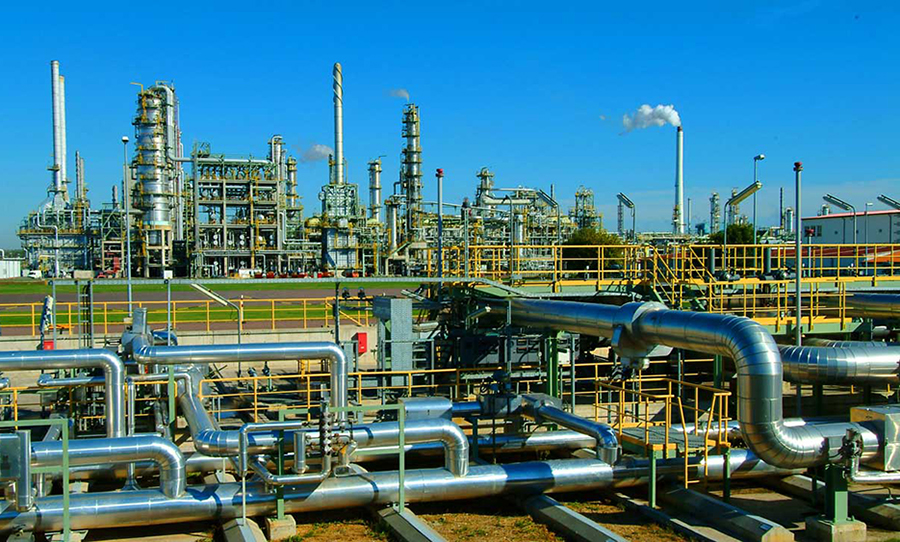
By Kestér Kenn Klomegâh
Over the past two decades, Russia’s economic influence in Africa—and specifically in Nigeria—has been limited, largely due to a lack of structured financial support from Russian policy banks and state-backed investment mechanisms. While Russian companies have demonstrated readiness to invest and compete with global players, they consistently cite insufficient government financial guarantees as a key constraint.
Unlike China, India, Japan, and the United States—which have provided billions in concessionary loans and credit lines to support African infrastructure, agriculture, manufacturing, and SMEs—Russia has struggled to translate diplomatic goodwill into substantial economic projects. For example, Nigeria’s trade with Russia accounts for barely 1% of total trade volume, while China and the U.S. dominate at over 15% and 10% respectively in the last decade. This disparity highlights the challenges Russia faces in converting agreements into actionable investment.
Lessons from Nigeria’s Past
The limited impact of Russian economic diplomacy echoes Nigeria’s own history of unfulfilled agreements during former President Olusegun Obasanjo’s administration. Over the past 20 years, ambitious energy, transport, and industrial initiatives signed with foreign partners—including Russia—often stalled or produced minimal results. In many cases, projects were approved in principle, but funding shortfalls, bureaucratic hurdles, and weak follow-through left them unimplemented. Nothing monumental emerged from these agreements, underscoring the importance of financial backing and sustained commitment.
China as a Model
Policy experts point to China’s systematic approach to African investments as a blueprint for Russia. Chinese state policy banks underwrite projects, de-risk investments, and provide finance often secured by African sovereign guarantees. This approach has enabled Chinese companies to execute large-scale infrastructure efficiently, expanding their presence across sectors while simultaneously investing in human capital.
Egyptian Professor Mohamed Chtatou at the International University of Rabat and Mohammed V University in Rabat, Morocco, argues: “Russia could replicate such mechanisms to ensure companies operate with financial backing and risk mitigation, rather than relying solely on bilateral agreements or political connections.”
Russia’s Current Footprint in Africa
Russia’s economic engagement in Africa is heavily tied to natural resources and military equipment. In Zimbabwe, platinum rights and diamond projects were exchanged for fuel or fighter jets. Nearly half of Russian arms exports to Africa are concentrated in countries like Nigeria, Zimbabwe, and Mozambique. Large-scale initiatives, such as the planned $10 billion nuclear plant in Zambia, have stalled due to a lack of Russian financial commitment, despite completed feasibility studies. Similar delays have affected nuclear projects in South Africa, Rwanda, and Egypt.
Federation Council Chairperson Valentina Matviyenko and Senator Igor Morozov have emphasized parliamentary diplomacy and the creation of new financial instruments, such as investment funds under the Russian Export Center, to provide structured support for businesses and enhance trade cooperation. These measures are designed to address historical gaps in financing and ensure that agreements lead to tangible outcomes.
Opportunities and Challenges
Analysts highlight a fundamental challenge: Russia’s limited incentives in Africa. While China invests to secure resources and export markets, Russia lacks comparable commercial drivers. Russian companies possess technological and industrial capabilities, but without sufficient financial support, large-scale projects remain aspirational rather than executable.
The historic Russia-Africa Summits in Sochi and in St. Petersburg explicitly indicate a renewed push to deepen engagement, particularly in the economic sectors. President Vladimir Putin has set a goal to raise Russia-Africa trade from $20 billion to $40 billion over the next few years. However, compared to Asian, European, and American investors, Russia still lags significantly. UNCTAD data shows that the top investors in Africa are the Netherlands, France, the UK, the United States, and China—countries that combine capital support with strategic deployment.
In Nigeria, agreements with Russian firms over energy and industrial projects have yielded little measurable progress. Over 20 years, major deals signed during Obasanjo’s administration and renewed under subsequent governments often stalled at the financing stage. The lesson is clear: political agreements alone are insufficient without structured investment and follow-through.
Strategic Recommendations
For Russia to expand its economic influence in Africa, analysts recommend:
- Structured financial support: Establishing state-backed credit lines, policy bank guarantees, and investment funds to reduce project risks.
- Incentive realignment: Identifying sectors where Russian expertise aligns with African needs, including energy, industrial technology, and infrastructure.
- Sustained implementation: Turning signed agreements into tangible projects with clear timelines and milestones, avoiding the pitfalls of unfulfilled past agreements.
With proper financial backing, Russia can leverage its technological capabilities to diversify beyond arms sales and resource-linked deals, enhancing trade, industrial, and technological cooperation across Africa.
Conclusion
Russia’s Africa strategy remains a work in progress. Nigeria’s experience with decades of agreements that failed to materialize underscores the importance of structured financial commitments and persistent follow-through. Without these, Russia risks remaining a peripheral player (virtual investor) while Arab States such as UAE, China, the United States, and other global powers consolidate their presence.
The potential is evident: Africa is a fast-growing market with vast natural resources, infrastructure needs, and a young, ambitious population. Russia’s challenge—and opportunity—is to match diplomatic efforts with financial strategy, turning political ties into lasting economic influence.
World
Afreximbank Warns African Governments On Deep Split in Global Commodities
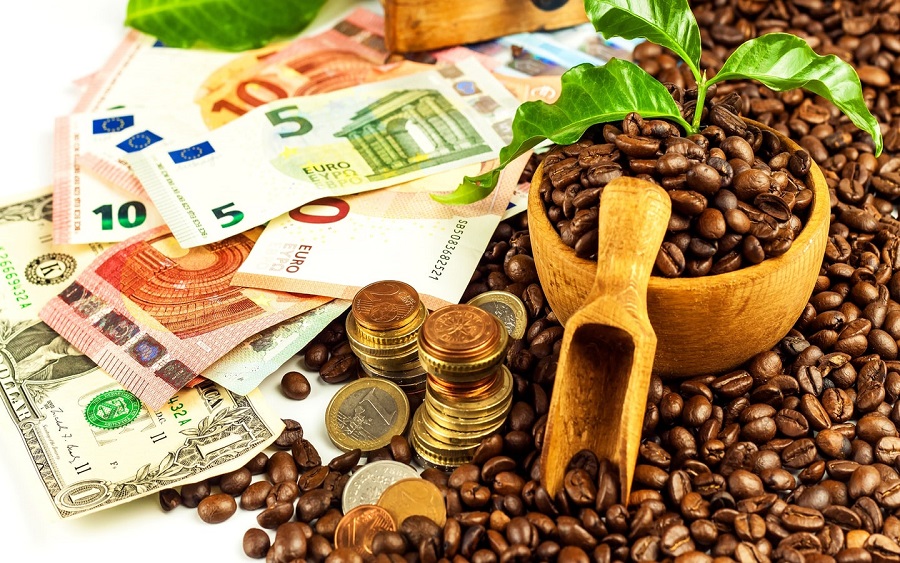
By Adedapo Adesanya
Africa Export-Import Bank (Afreximbank) has urged African governments to lean into structural tailwinds, warning that the global commodity landscape has entered a new phase of deepening split.
In its November 2025 commodity bulletin, the bank noted that markets are no longer moving in unison; instead, some are powered by structural demand while others are weakening under oversupply, shifting consumption patterns and weather-related dynamics.
As a result of this bifurcation, the Cairo-based lender tasked policymakers on the continent to manage supply-chain vulnerabilities and diversify beyond the commodity-export model.
The report highlights that commodities linked to energy transition, infrastructure development and geopolitical realignments are gaining momentum.
For instance, natural gas has risen sharply from 2024 levels, supported by colder-season heating needs, export disruptions around the Red Sea and tightening global supply. Lithium continues to surge on strong demand from electric-vehicle and battery-storage sectors, with growth projections of up to 45 per cent in 2026. Aluminium is approaching multi-year highs amid strong construction and automotive activity and smelter-level power constraints, while soybeans are benefiting from sustained Chinese purchases and adverse weather concerns in South America.
Even crude oil, which accounts for Nigeria’s highest foreign exchange earnings, though still lower year-on-year, is stabilising around $60 per barrel as geopolitical supply risks, including drone attacks on Russian facilities, offset muted global demand.
In contrast, several commodities that recently experienced strong rallies are now softening.
The bank noted that cocoa prices are retreating from record highs as West African crop prospects improve and inventories recover. Palm oil markets face oversupply in Southeast Asia and subdued demand from India and China, pushing stocks to multi-year highs. Sugar is weakening under expectations of a nearly two-million-tonne global surplus for the 2025/26 season, while platinum and silver are seeing headwinds from weaker industrial demand, investor profit-taking and hawkish monetary signals.
For Africa, the bank stresses that the implications are clear. Countries aligned with energy-transition metals and infrastructure-linked commodities stand to benefit from more resilient long-term demand.
It urged those heavily exposed to softening agricultural markets to accelerate a shift into processing, value addition and product diversification.
The bulletin also called for stronger market-intelligence systems, improved intra-African trade connectivity, and investment in logistics and regulatory capacity, noting that Africa’s competitiveness will depend on how quickly governments adapt to the new two-speed global environment.
World
Aduna, Comviva to Accelerate Network APIs Monetization

By Modupe Gbadeyanka
A strategic partnership designed to accelerate worldwide enterprise adoption and monetisation of Network APIs has been entered into between Comviva and the global aggregator of standardised network APIs, Aduna.
The adoption would be done through Comviva’s flagship SaaS-based platform for programmable communications and network intelligence, NGAGE.ai.
The partnership combines Comviva’s NGAGE.ai platform and enterprise onboarding expertise with Aduna’s global operator consortium.
This unified approach provides enterprises with secure, scalable access to network intelligence while enabling telcos to monetise network capabilities efficiently.
The collaboration is further strengthened by Comviva’s proven leadership in the global digital payments and digital lending ecosystem— sectors that will be among the biggest adopters of Network APIs.
The NGAGE.ai platform is already active across 40+ countries, integrated with 100+ operators, and processing over 250 billion transactions annually for more than 7,000 enterprise customers. With its extensive global deployment, NGAGE.ai is positioned as one of the most scalable and trusted platforms for API-led network intelligence adoption.
“As enterprises accelerate their shift toward real-time, intelligence-driven operations, Network APIs will become foundational to digital transformation. With NGAGE.ai and Aduna’s global ecosystem, we are creating a unified and scalable pathway for enterprises to adopt programmable communications at speed and at scale.
“This partnership strengthens our commitment to helping telcos monetise network intelligence while enabling enterprises to build differentiated, secure, and future-ready digital experiences,” the chief executive of Comviva, Mr Rajesh Chandiramani, stated.
Also, the chief executive of Aduna, Mr Anthony Bartolo, noted that, “The next wave of enterprise innovation will be powered by seamless access to network intelligence.
“By integrating Comviva’s NGAGE.ai platform with Aduna’s global federation of operators, we are enabling enterprises to innovate consistently across markets with standardised, high-performance Network APIs.
“This collaboration enhances the value chain for operators and gives enterprises the confidence and agility needed to launch new services, reduce fraud, and deliver more trustworthy customer experiences worldwide.”
-
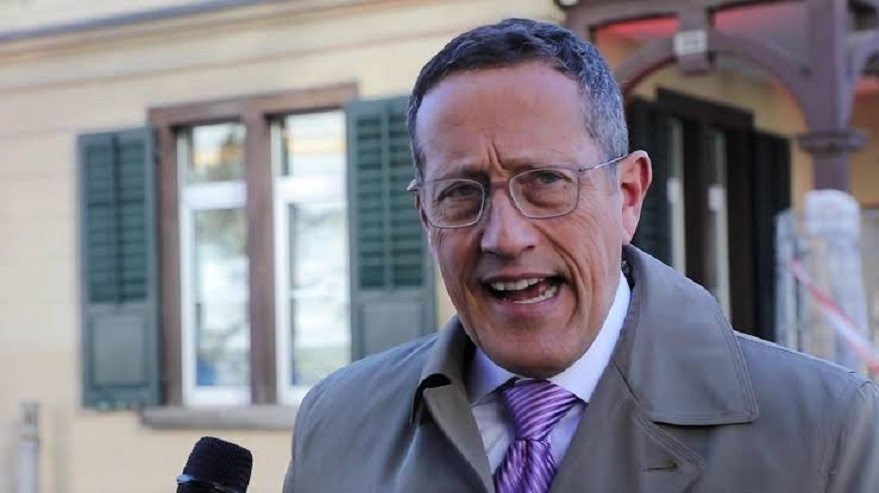
 Feature/OPED6 years ago
Feature/OPED6 years agoDavos was Different this year
-
Travel/Tourism9 years ago
Lagos Seals Western Lodge Hotel In Ikorodu
-

 Showbiz3 years ago
Showbiz3 years agoEstranged Lover Releases Videos of Empress Njamah Bathing
-
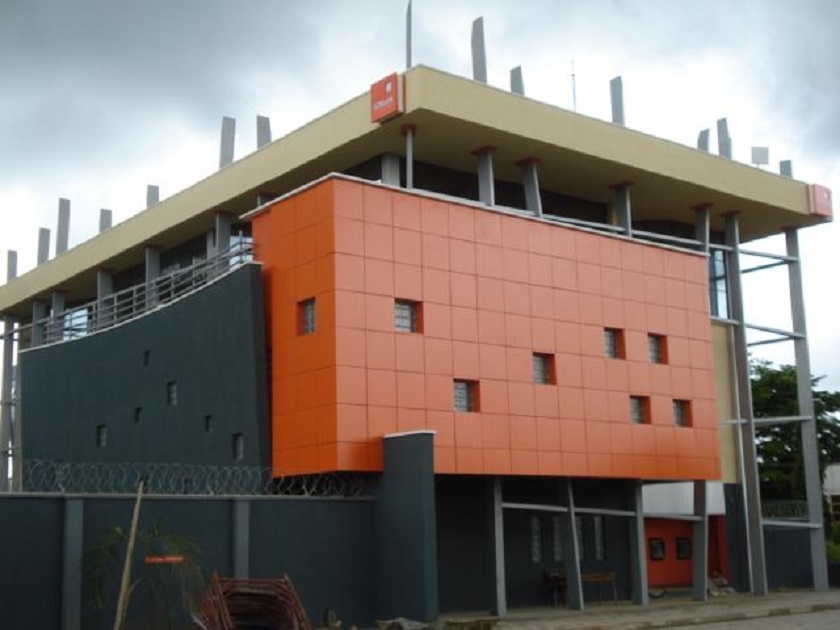
 Banking7 years ago
Banking7 years agoSort Codes of GTBank Branches in Nigeria
-
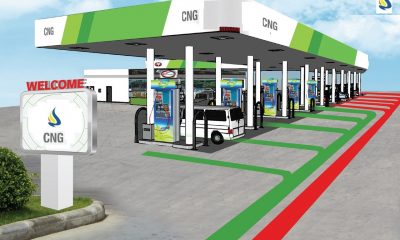
 Economy2 years ago
Economy2 years agoSubsidy Removal: CNG at N130 Per Litre Cheaper Than Petrol—IPMAN
-

 Banking3 years ago
Banking3 years agoFirst Bank Announces Planned Downtime
-
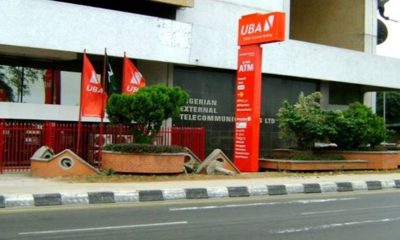
 Banking3 years ago
Banking3 years agoSort Codes of UBA Branches in Nigeria
-

 Sports3 years ago
Sports3 years agoHighest Paid Nigerian Footballer – How Much Do Nigerian Footballers Earn





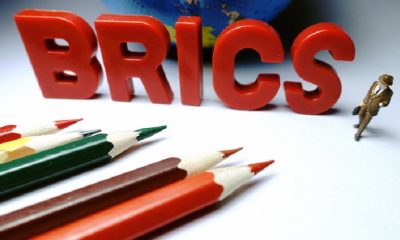

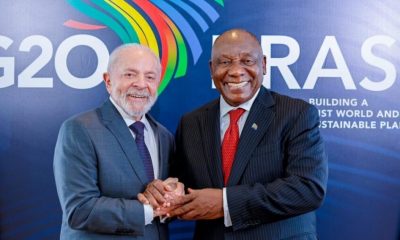

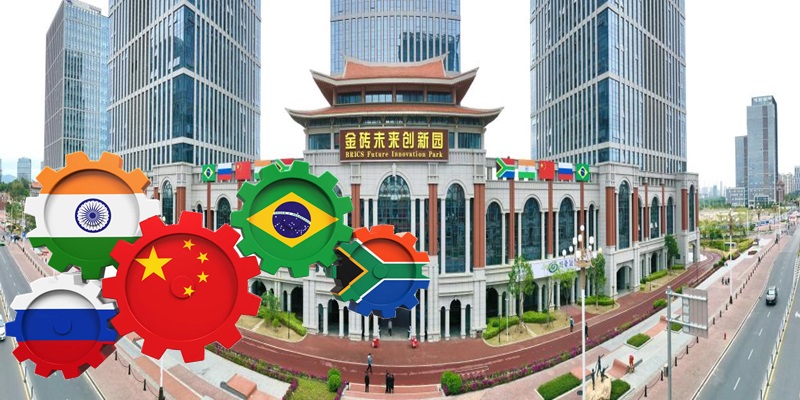
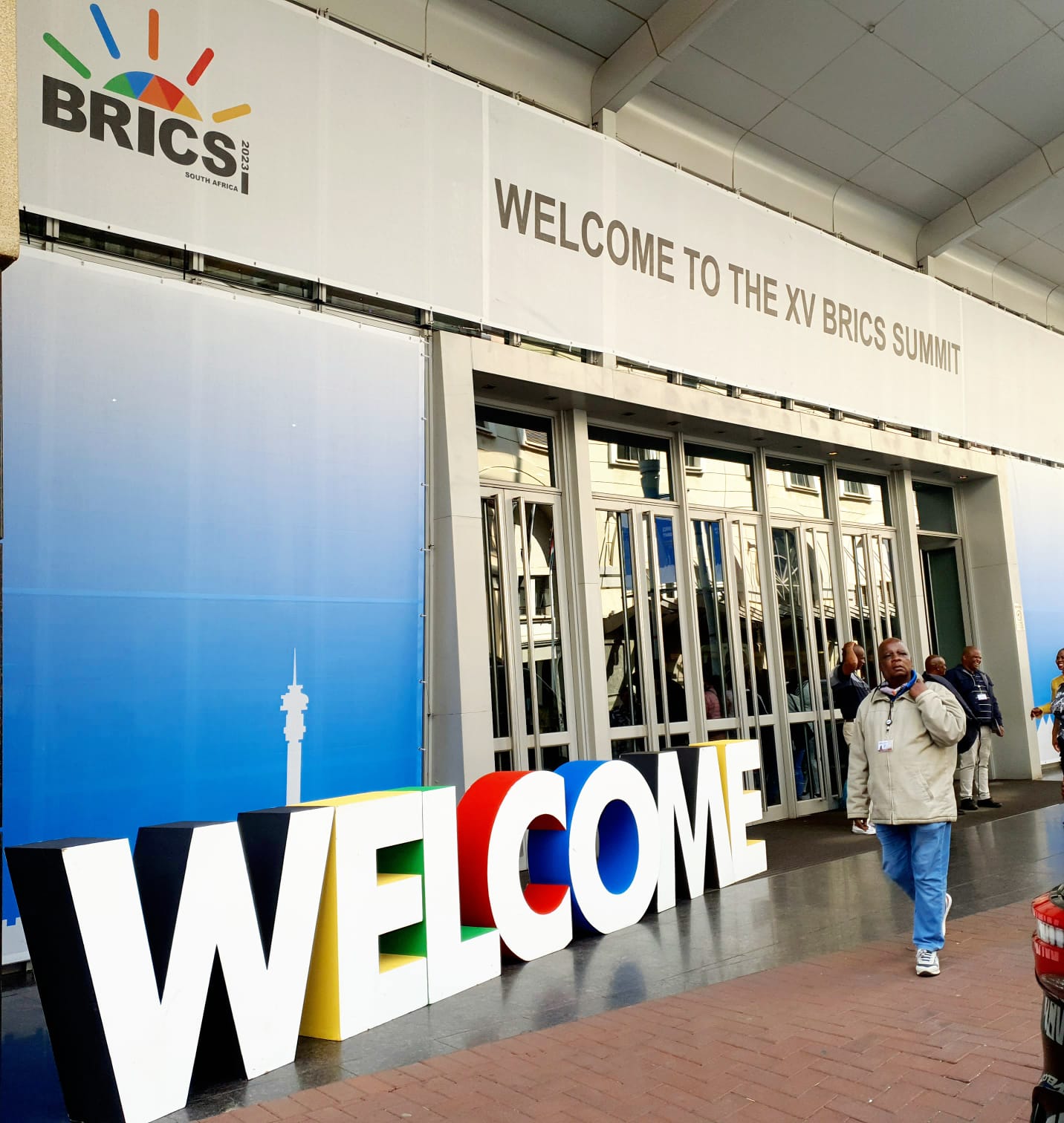
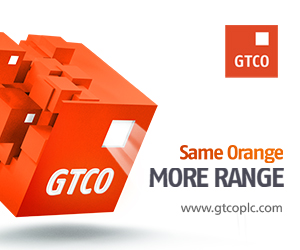
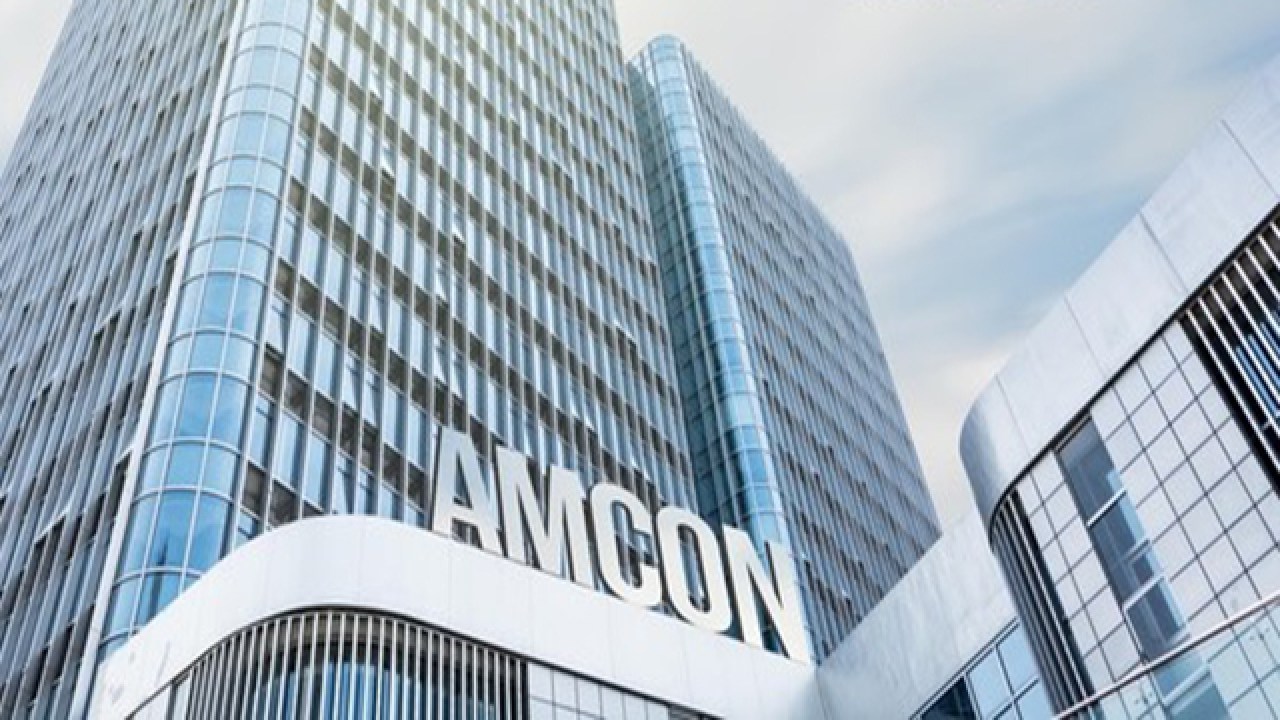

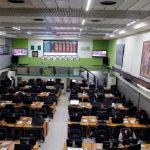




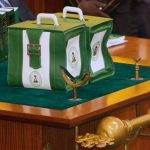
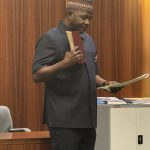
Pingback: BRICS round-up 20 December 2024 – BRICS Connect